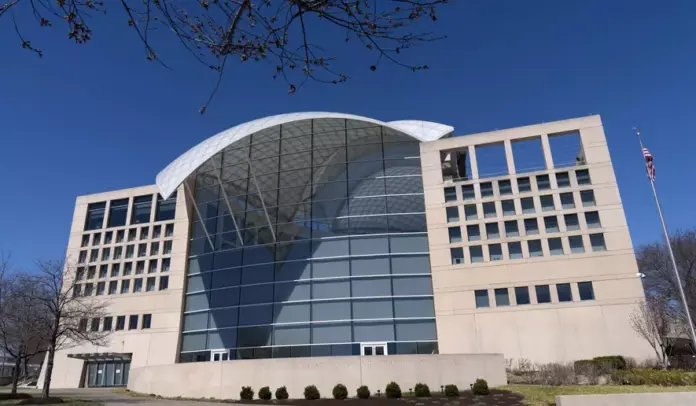A surprising court fight is underway over the DOGE $500 million building, once the headquarters of the United States Institute of Peace (USIP). The bid to give away this prime real estate to the federal government for free has triggered lawsuits and staunch opposition.
DOGE’s Bold Move
The DOGE leadership has made a sudden bid to transfer the DOGE $500 million building to the General Services Administration (GSA). The surprise move has been met with legal opposition from former USIP officials, who argue that it is an illegal move to disestablish the institute.
How Did DOGE Gain Control?
Strains escalated further with the Trump administration expelling all ten USIP board members on March 14. DOGE reps were originally blocked from entering but three days later used an access key that came from a retired security contractor, according to reports. Soon enough, the whole takeover followed and Kenneth Jackson, a retired State Department rep, was put into place as president. The exchange paved the way for the transfer of DOGE’s $500 million building to be finalized with controversy.
Also read: Kavanaugh VS. 5th Circuit: Election Rule Clash
Legal Wars and Resistance
USIP workers were subjected to en masse layoffs, and the decision to relocate the DOGE $500 million building to the GSA was met quickly with litigation. Former USIP officials have sued DOGE management for claiming that this move infringes upon the independence and congressional directive of the institute.
American District Judge Beryl Howell criticized the seizure on March 19 but rejected an injunction for the time being. That opened the door for further litigation, with a pivotal ruling soon to be issued.
Leadership Changes and Federal Response
New events transpired when Kenneth Jackson was substituted as acting president on March 25 by Nate Cavanaugh, a DOGE employee who had been seconded to the GSA before. Court papers disclosed that Cavanaugh was instructed to move the DOGE $500 million building to the GSA. The instruction was given with the endorsement of Secretary of State Marco Rubio and Secretary of Defense Pete Hegseth.
Cavanaugh justified the transfer on the grounds that it was in the best interest of the government. He also asked for exemption from the standard reimbursement requirement of federal property transfers. His assessment of the DOGE $500 million building for $500 million also highlighted the significance of the property.
Government’s Justification
Government attorneys have rationalized the transfer citing a February Executive Order signed by President Donald Trump. As per this order,the executive branch discretion to reorganize independent agencies. And, it makes the transfer of the DOGE $500 million building legal.
Why This Matters
The destiny of the DOGE $500 million building represents more than just a shift in property ownership. It sends shivers through the body about political meddling into independent institutions. Critics view the move as one aimed at dismantling USIP and disarming its ability to play a global diplomacy role.
Meanwhile, advocates argue that the transfer is in line with moves to rationalize government operations and cut expenses. At the center of the controversy is the DOGE $500 million building. Both sides are still engaged in a fierce political and legal battle.
What Happens Next?
A judge will soon decide whether the transfer is legal. Depending on the ruling, the DOGE $500 million building could remain under the government or be returned to USIP.
At the heart of the controversy is the DOGE $500 million building, which remains a symbol for the larger conflict between institutional autonomy and political control. The court’s ruling in this case has the potential to establish a precedent for future government seizures of independent agencies.
Stay tuned as legal proceedings continue to unfold around the DOGE $500 million building, shaping the future of USIP and its role in global peace efforts.








